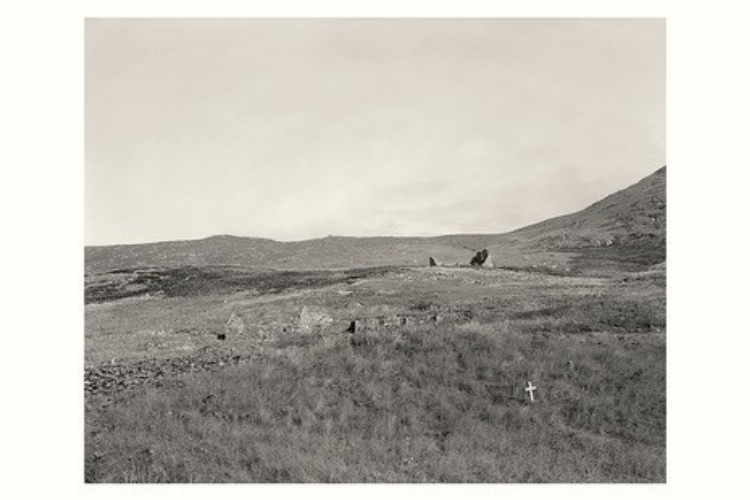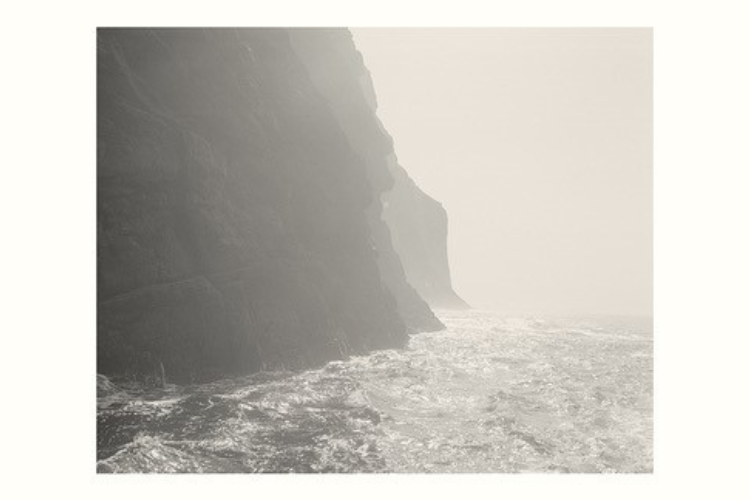New photos of abandoned island on display
 A new series of images by 2021’s World Photographer of the Year will allow visitors to the University’s Wardlaw Museum to explore a long-abandoned Scottish wilderness.
A new series of images by 2021’s World Photographer of the Year will allow visitors to the University’s Wardlaw Museum to explore a long-abandoned Scottish wilderness.
The previously unseen works by renowned photographer Craig Easton are part of a new exhibition which opened this weekend (Sunday 8 October), exploring the tiny island of Mingulay, which was abandoned in 1912. Easton returned to photograph the island in 2021.
Easton’s works are juxtaposed with those of Robert Moyes Adam, who photographed the island in 1905 and 1922, and Margaret Faye Shaw, who documented the lives of the shepherds who temporarily returned to the island in the 1930s. Together the three sets of images give a unique insight into the impact of human absence on landscapes, ecosystems and culture.
“To see the work of these photographers side by side is wonderful opportunity,” says Laura Brown, Curator of Photography at University of St Andrews. “Adam’s work is extraordinary in covering almost every corner of the Scottish landscape, but clearly Mingulay meant a great deal to him. And he continues to inspire photographers to this day.”
“Craig Easton, wanting to mark the centenary of Adam’s final visit, took great risks to reach the island and follow in his footsteps, but with a contemporary eye. We were delighted to acquire Craig’s portfolio of the project, with the generous support of the Art Fund and the National Fund for Acquisitions, and to give visitor the chance to see them for the first time.”
Easton, who won Photographer of the Year at the 2021 SONY World Photography Awards, was inspired to embark on the Mingulay project by Robert Moyes Adam’s glass plate negatives and handwritten ledgers, which are held at the University of St Andrews. The series provides an important modern environmental record of the nature reserve, highlighting environmental changes and challenges over the last 100 years.
Craig Easton said: “It was during a visit to see the photographic collections at the University of St Andrews that I came across Robert Moyes Adam’s negatives and hand-written ledgers of his two visits to Mingulay. I work extensively in the Scottish Islands and, knowing the history of Mingulay, I immediately wanted to go and see it for myself. My aim was not to make forensic photographs from the same viewpoint as Adam, but rather to use his work as inspiration to revisit the island and respond in a new way, albeit using a similarly cumbersome large format camera. I’m grateful to St Andrews University for adding this new work to their collection and for their continuing wider support of contemporary Scottish photography.”

Today the island is an important seabird breeding ground and home to 6% of Europe’s razorbill population, alongside large numbers of puffins.
The exploration of the human impact of nature is a part of the museum’s research into sustainability and supports the University of St Andrews extensive ground-breaking research in this area.
The early photographs also give fascinating insights into the lives or those who lived and worked on the island, showing individuals in their kitchens, outside their homes and enjoying camaraderie as they care for their flocks of sheep. The exhibition also the culture of these inhabitants through Gaelic poetry and song.
Return to Mingulay is on display at the Wardlaw Museum in St Andrews from Sunday 8 October 2023 to Sunday 7 January 2024 and is accompanied by a series of free events, including a family St Andrews Day celebration of Scottish culture on Saturday 25 November.
Purchase of Craig Easton’s Mingulay portfolio was made possible by the Art Fund and the National Fund for Acquisitions.
Images copyright Craig Easton.
Issued by the University of St Andrews Communications Office.